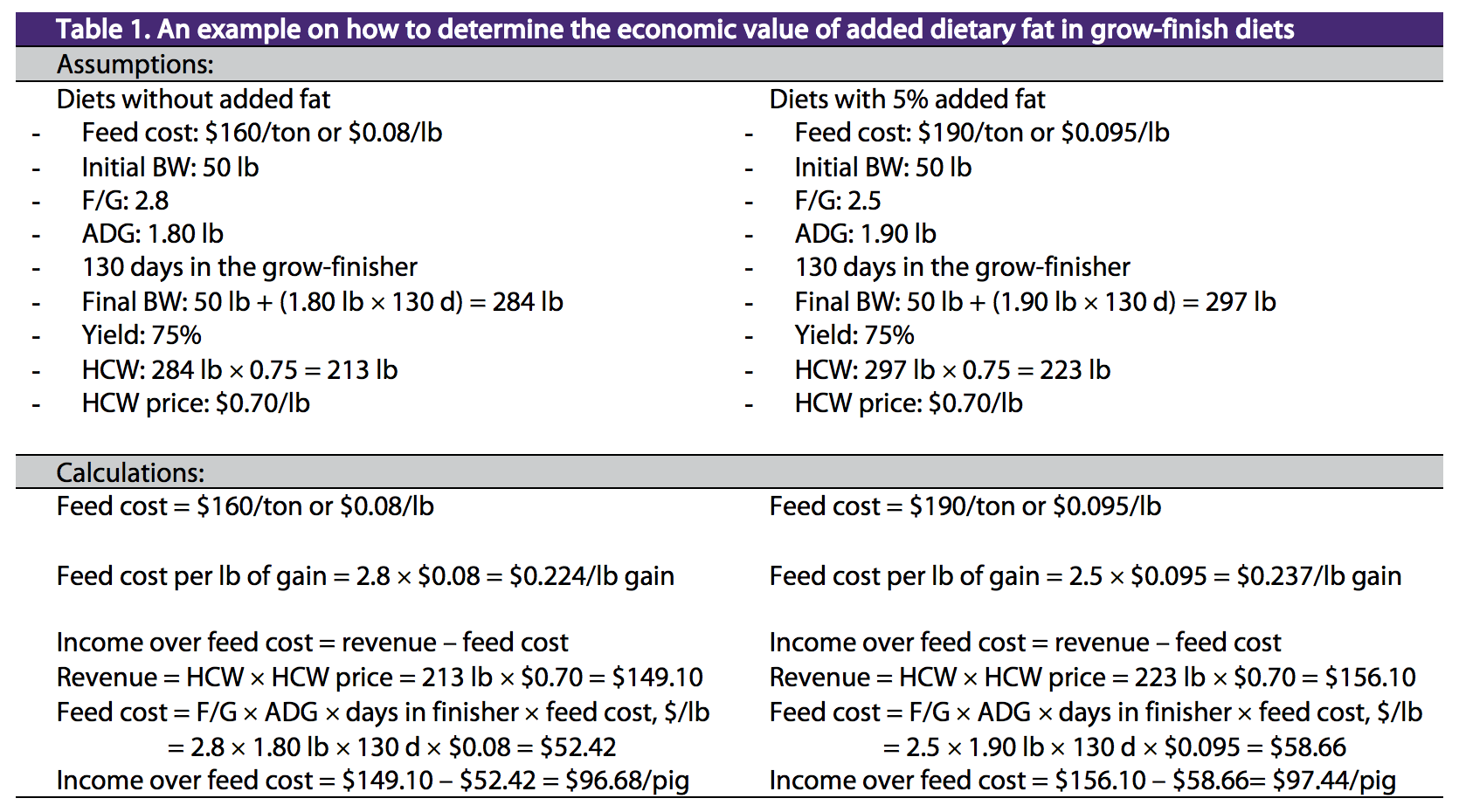Economics of using fats or oils
Energy is the most expensive component of the diet. The use of fat in the diet increases dietary energy and has direct impact on growth rate, feed efficiency, and carcass criteria. The use of fat should be based on an economic analysis to determine the most economical dietary energy level considering the value of incremental changes in energy on production indicators and the market price.
A production tool has been developed to aid in determining the optimum dietary energy level in the grow-finish phase (Net Energy Model). Also, using the appropriate method to evaluate the economics of using fat is essential to determine the most cost-effective diet.
The example in Table 1 illustrates the use of feed cost, feed cost per pound of gain and income over feed cost, to determine the economics of added dietary fat. The example is a comparison between two nutritional programs with or without 5% added fat in grow-finish diets. The assumption is that diets with added fat are approximately 20% more expensive but result in 10% improvement in feed efficiency and 5% increase in average daily gain in a system running on a fixed-time basis.
In this example, considering feed cost or feed cost per pound of gain, the nutritional program without added fat to grow-finish diets would be more economical. However, taking into account the extra weight gain and improvement in feed efficiency with added fat, there is a $0.76 per pig advantage in income over feed cost with a nutritional program with added fat to grow-finish diets. This would be the interpretation in a system that runs on a fixed-time basis. However, if the system runs on a fixed-weight basis and could take longer to achieve a heavier carcass weight, then feed cost per pig would also be an adequate indicator of the economic value of the nutritional program.

